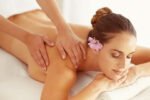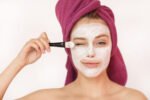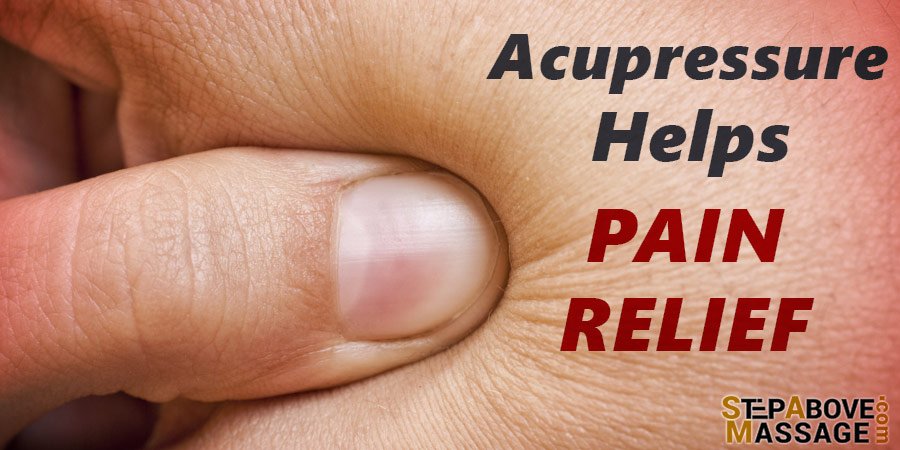Acupressure is a massage therapy technique originally used in Traditional Chinese Medicine (TCM) for more than 2000 years. Still effective today, this technique uses the pressure of fingers, thumbs, knuckles, and palms to release and regulate Chi or Qi (which in Chinese means life force energy) from special spots of the body, called acupressure points or acupoints, where Chi is more easily accessible. By releasing the blocked Chi in the body, body energy can flow and improve one’s health and relief pain. It can help the body’s circulatory, lymphatic and hormonal systems to function more properly and harmoniously.
Various Methods of Acupressure
Acupressure has different methods which are based on different pressure rhythms. We will take a look at the four most famous and most applied acupressure techniques: Shiatsu, Reflexology, Meridian, and Sujok.
- Shiatsu Therapy
The first well-known method is a Japanese style of acupressure, Shiatsu, which means finger pressure. In this method, the therapist uses his/her fingers to apply firm pressure on acupoints in order to equalize the energy imbalances in the body. It also includes stretching, special kind of breathing, and also meditation.
- Reflexology Therapy
Another method which was established by Madam Yuni Singam in the US is called Jhonology or reflexology therapy. This technique has four types of Foot Reflexology, Hand Reflexology, Face Reflexology and Ear Reflexology. It is based on the reflexes signs a human body shows when the flow of energy and blood is imbalanced and obstructed. These reflexes show themselves through pain, or what we call disease, and a therapist uses the pain sources to find the body part which should be stimulated in order to regain the harmonized stream of energy and blood.
- Meridian Therapy
This technique was born in China and is based on bioenergy circulation. This technique focuses on the energy circulation of the body rather than the blood circulation. It presumes 12 Meridians or Channels in the human body and most sensitive parts are around fingertips, toes, elbows, and knees. Meridian acupressure technique focuses on these sensitive points in order to promote bioenergy circulation.
- Sujok Therapy
This method was invented by a philosopher, Professor Park Jae Woo, in Korea. The name of the method is a combination of two Korean words: Sue which means hand and Jok which means foot. Sujok therapy cures the pain and discomfort through specific points on hands and feet. It has six types of Auricular Therapy, Head Correspondence Therapy, M-Particle Therapy, and Color Chakra Acupuncture. The treatment can trigger different diseases in the heart, brain, kidneys, lungs, liver, etc.
How Does Acupressure Work
Acupressure unblocks congested energy centers in the body in order to heal it and prevent against illness. It is practiced through the special pressure on specific body points to manipulate the area and activate one’s body energy. There are two types of acupoints: local points and trigger points.
Local Points
These are the actual points where the patient specifically feels pain or tension. By applying acupressure, the therapist tries to comfort the affected areas of the patient’s body.
Trigger Points
These points are other body parts where the therapist stimulates in order to relieve the painful parts, even if they are far from the affected ones. The connections of different body parts are established through meridians, the network of pathways which connects various parts of the body together. A professional massage therapist knows how the meridian system works and which body parts should be triggered.
Benefits of Acupressure
Acupressure massage therapy helps to cure mental and physical pains and disorders and harmoniously balance the flow of body energy all over the meridian network. With a more relaxed and regulated meridian system, not only the pain and discomfort is diminished but also further tension and diseases are prevented.
Acupressure massage therapy can help to reduce stress, discomfort, fatigue, tension, anxiety, menstrual cramps, motion sickness, nausea or vomiting after surgery or chemotherapy as well as nausea and vomiting during pregnancy and morning sickness, sleep disorders, and digestive issues. Moreover, acupressure has been proven to be effective in reducing pain with much fewer side effects than analgesic pills, tablets, or injections.
You can reduce pain in your head, ears, stomach, neck, back, teeth shoulders, etc. by applying acupressure techniques on certain areas. For instance, the point L14, which is located on the fleshy part of your hand between your thumb and index finger, can heal headaches, toothaches, neck and shoulder pain, and arthritis pain. As another example, massaging the point P6, which is located on the inside of your wrist a little below the base of your palm, can decrease nausea and vomiting issues. Likewise, massaging the point CV17, which is located at the center and a little above the base of the bone of your breastbone, can decrease your anxiety and depression and balance your emotional status. The list goes on and on! Interestingly, Traditional Chinese medicine therapists believe that there are at least 2,000 acupuncture points in the human body!
What to Expect During a Typical Acupressure Session
In a typical acupressure session, you would receive gentle pressure of the therapist’s fingers, thumbs, knuckles, and palms-on certain parts of your body while you are sitting or lying down on a massage table. Each pressure often lasts for 1.5 to 3 minutes: for 30 seconds the pressure must be rising, for 30 to 120 seconds the pressure must be steady, and for the last 30 seconds the pressure must be decreasing. The practice is repeated three to five times; however, there is no limit on the number of times it can be applied.
While you are receiving the massage, try to relax, close your eyes and take deep breaths. During the practice, you should never feel pain. Once you experience any pain, tell it to your therapist immediately. After the session, you may feel a little soreness or see some bruises at the manipulated points. You might also feel a little lightheaded. Receiving regular and consistent acupressure treatments can improve your condition and minimize the recurrence of the condition’s symptoms.
Final Thought
It is highly recommended that before attending an acupressure session, you consult with your doctor and ask for his/her advice on the treatment, especially if your condition is a type of heart disease, cancer, diabetes, or uncontrolled blood pressure. Acupressure is a complementary treatment and can never replace medical help and care. It is also important that you find a professional massage therapist who is an expert in applying acupressure.
You should also exercise extra caution if you are pregnant. Your therapist should know about your pregnancy state in order to be careful around your abdomen or certain points on legs or lower back. You can also apply the acupressure techniques by yourself. But before you start applying acupressure on your own body, make sure that you are accurately trained by a competent and professional therapist.
here at step above massage we have a well-trained team of massage therapists to offer you best massage in Raleigh, Durham, and chapel hill










